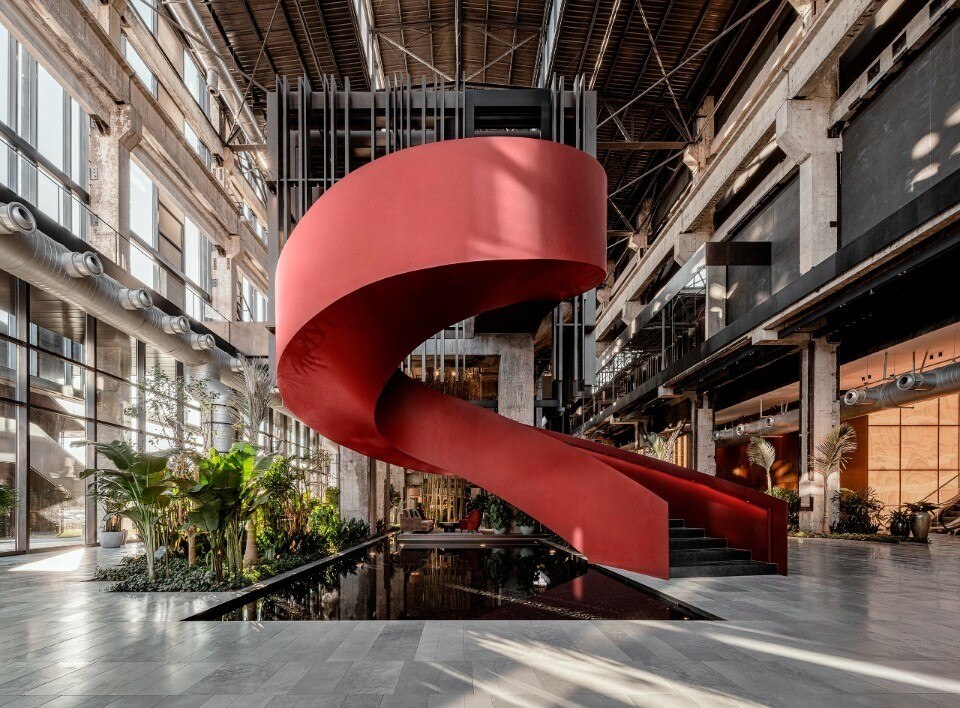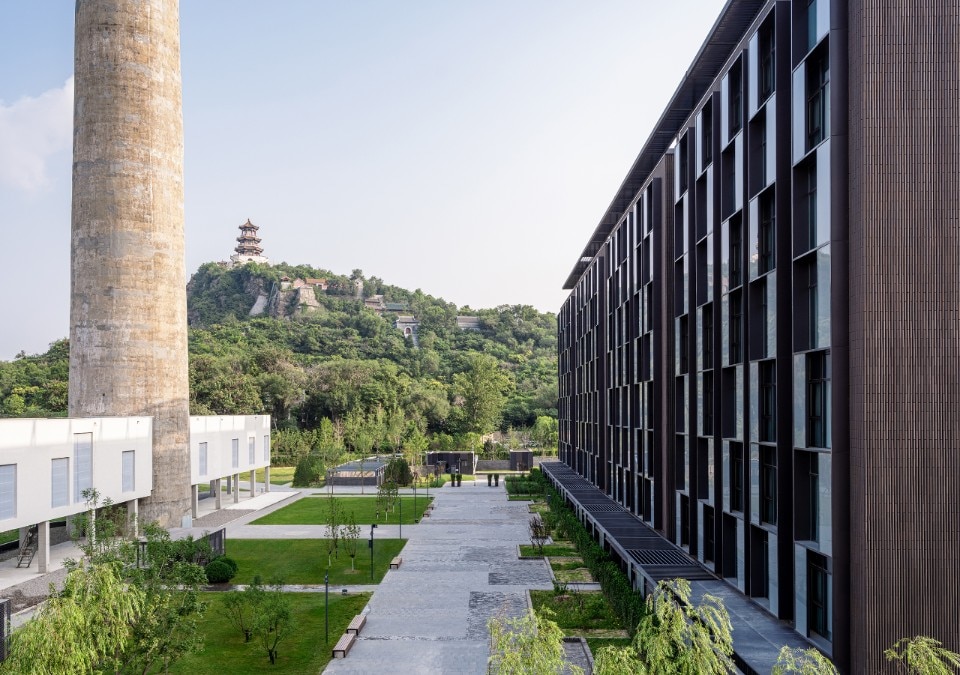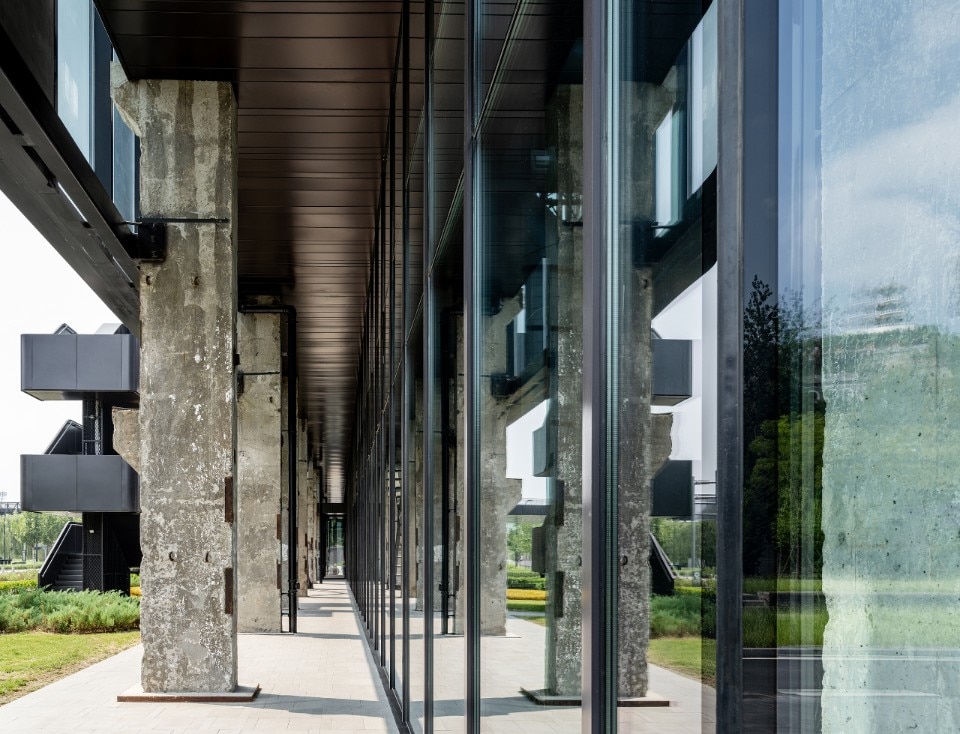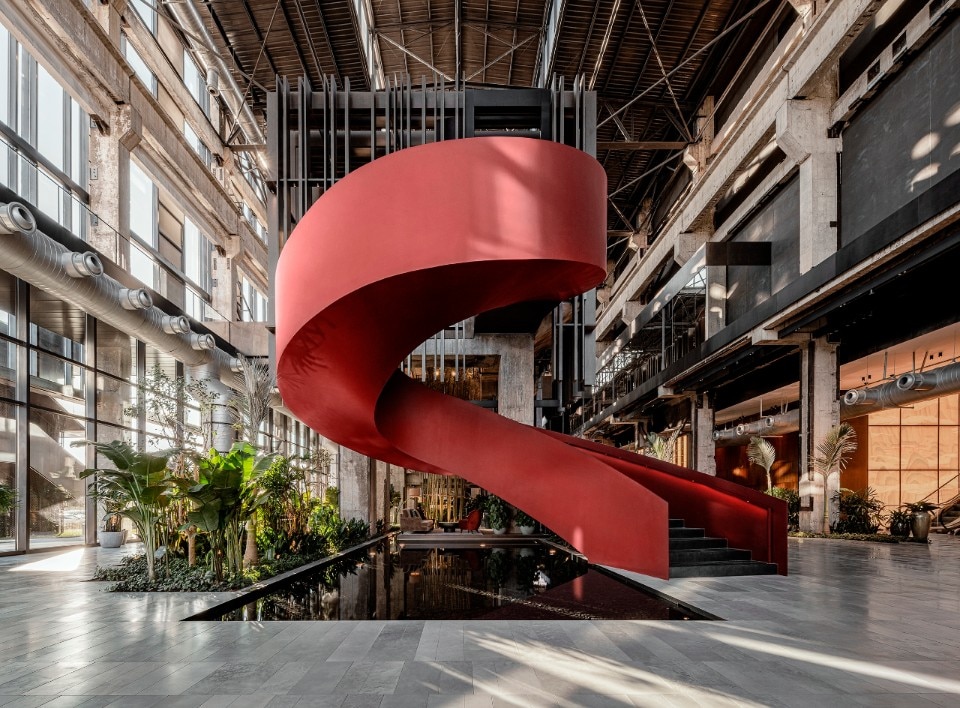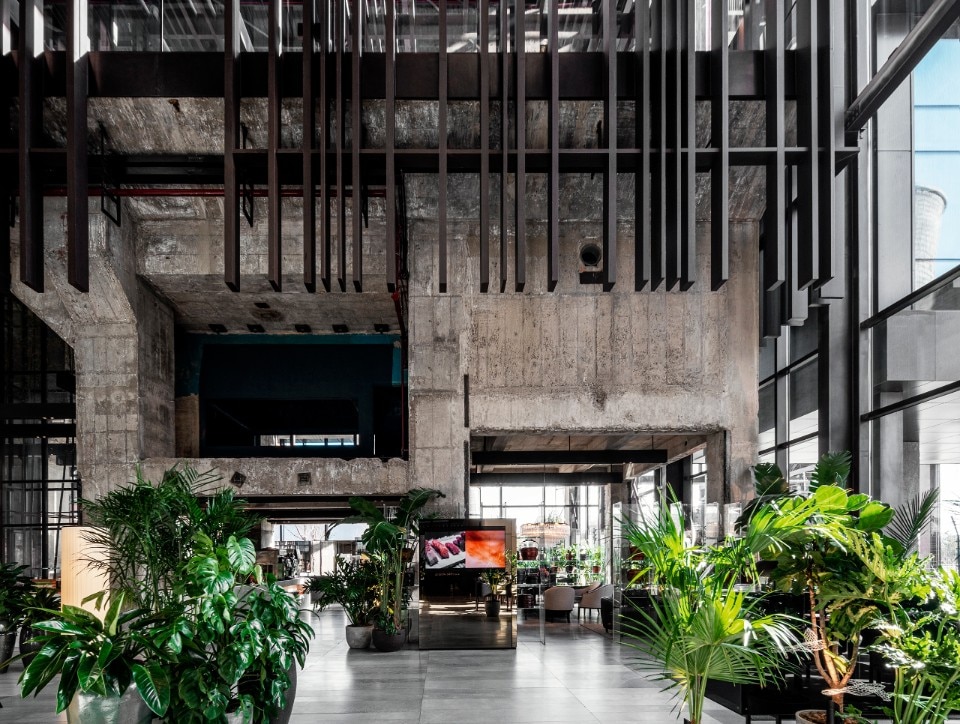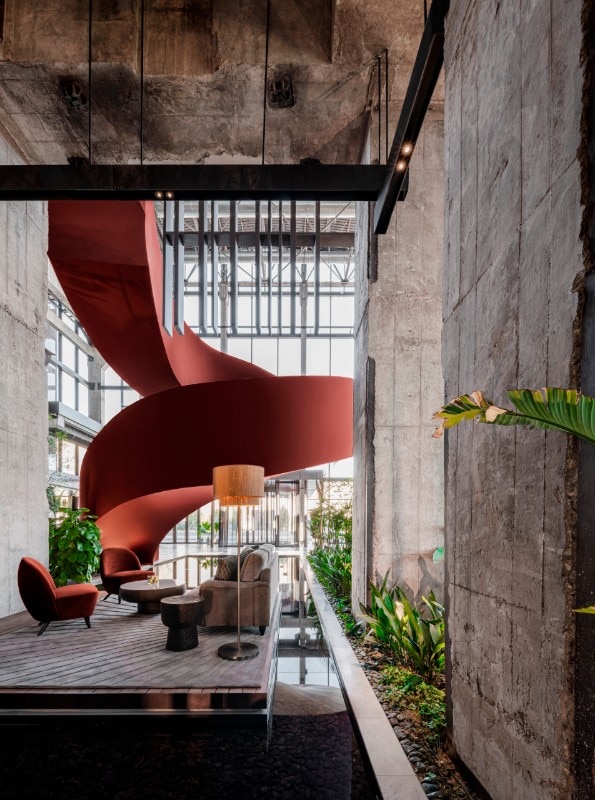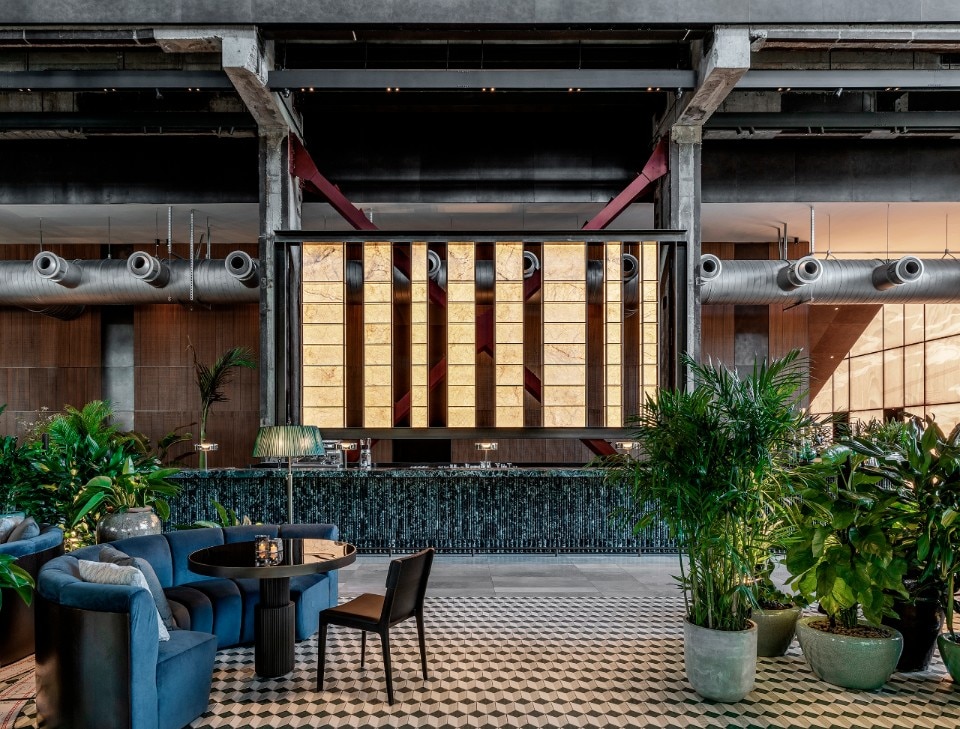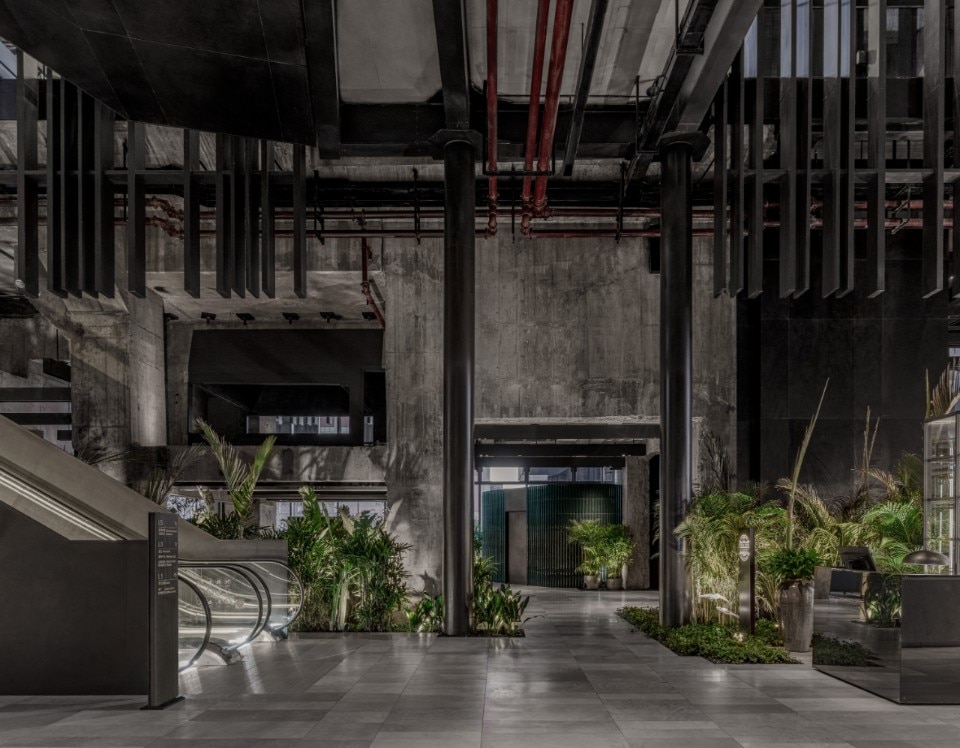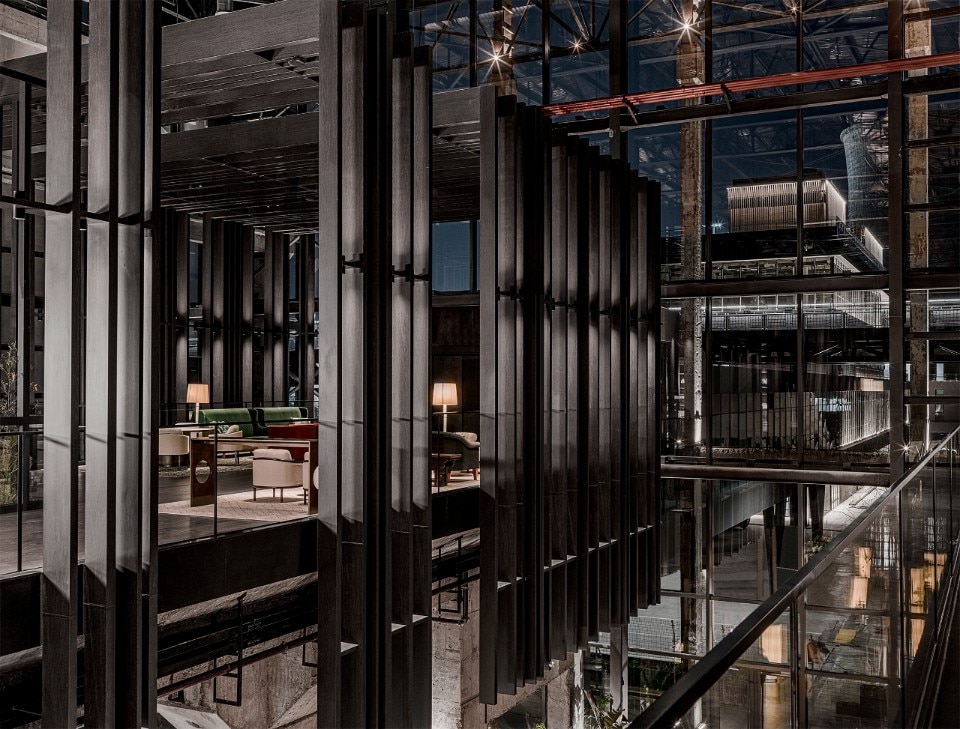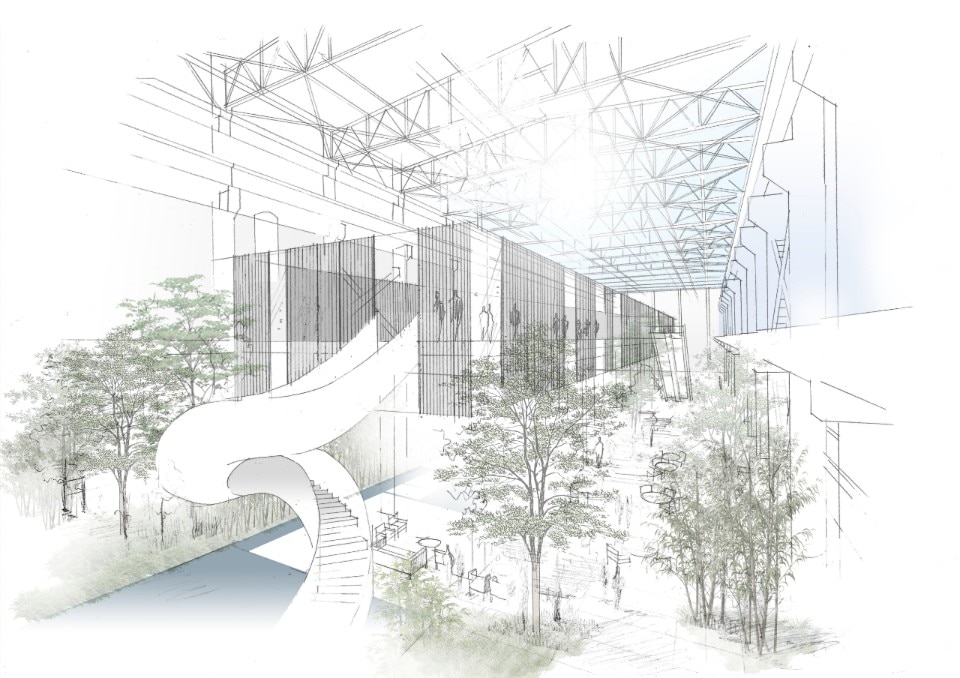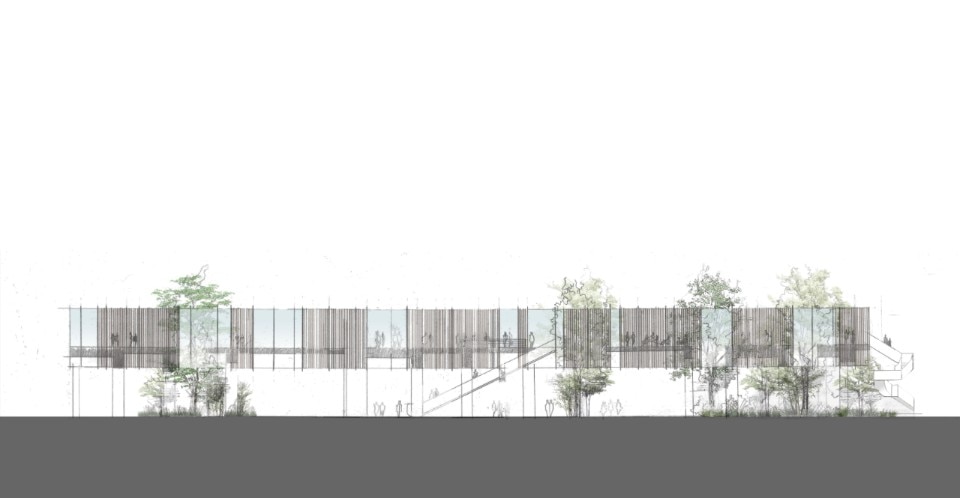This article was originally published on Domus 1073, November 2022.
Opened in early 2022 for the Winter Olympics in Beijing, the Shangri-La Shougang Park Hotel designed by Lissoni Casal Ribeiro participates in the reactivation of a former industrial site, repurposing its large-scale architecture as a hospitality venue. The Milanese studio had already tackled this theme with the Mamilla Hotel in Jerusalem (2009) and the Conservatorium Hotel in Amsterdam (2012), for example.
The 282 rooms are located in the Guestrooms Building, which takes the form of a parallelepiped enlivened by vertical slits, cantilevering canopies, rooftop screenings and “thick” windows, as well as the textures of its brick exterior. Elevated bridges connect it to the Main Building with its more communal areas. This is the conceptual and functional heart of the project, which co-opts the frame of a former power plant. An elegant glass facade with a complex pattern encloses a hall measuring approximately 20,000 square metres and 20 metres in height. Lissoni has transformed this area into a Piranesi-inspired space: polysemous, highly controlled but never minimalist.
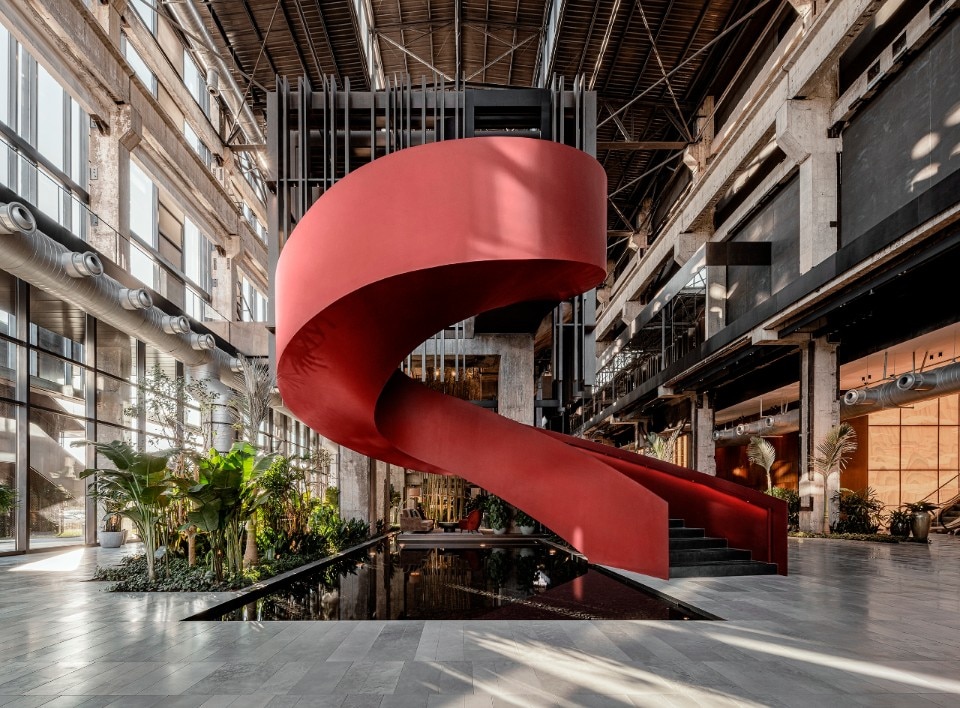
The interior also incorporates the original monumental concrete structures, oversized and unintentionally brutalist. In the reception and lounge areas, the wooden volumes are suspended over the open space of the bars and restaurants. There is also a boldly sculptural China-red winding staircase. Here, as elsewhere in the hotel, references to the global (chandeliers and many pieces of furniture), the local (traditional Chinese graphics and colours) and the site-specific (exposed systems and frameworks) propose a complex aesthetic for these high-end contemporary spaces.
Echoes of refined non-Western modern and contemporary architecture, from Lina Bo Bardi to Vo Trong Nghia, resound in the powerful combination of nature – the lush vegetation and the pool of water – and industrial heritage. As Piero Lissoni explains: “The Main Building is a covered plaza, a market and especially a spacious winter garden.”


